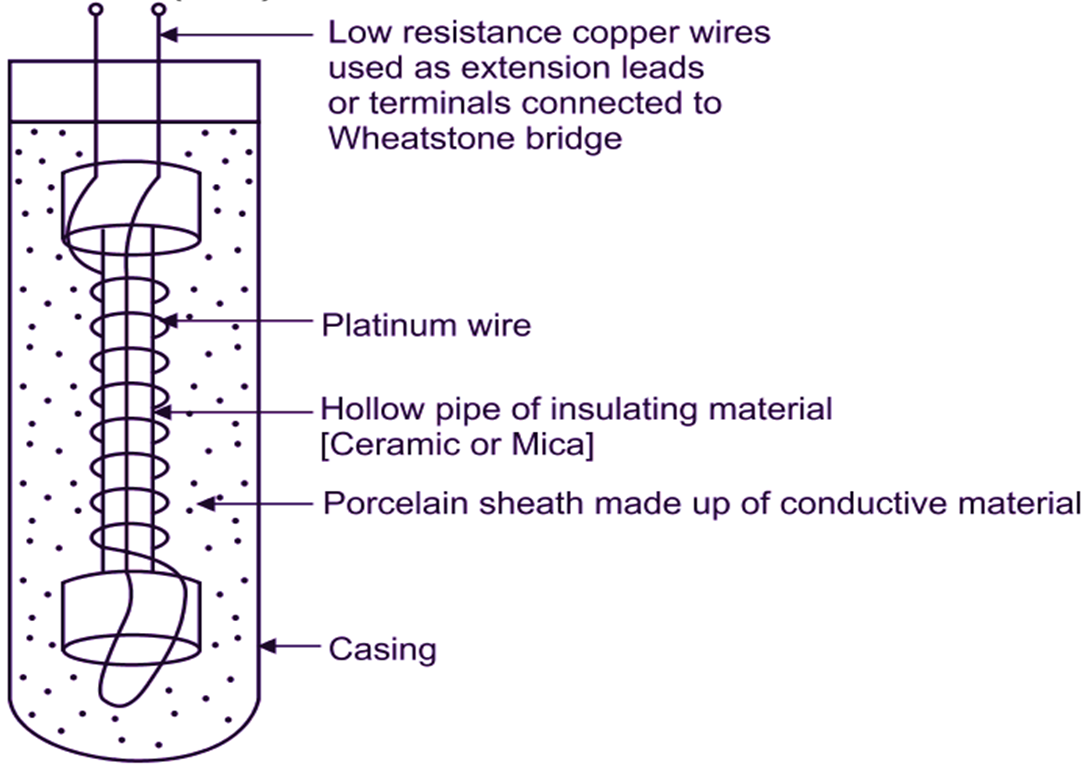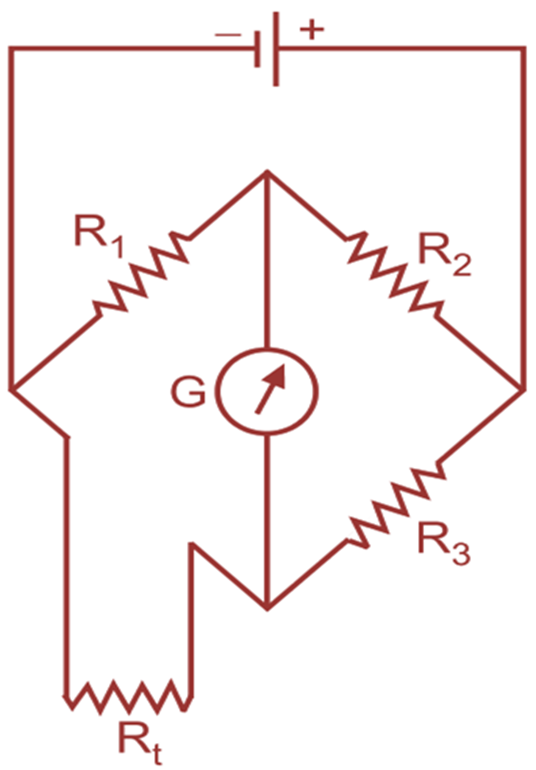Operating Range: – 200°C to 1000°C.
Platinum resistance thermometer is basically a metallic-resistance thermometer in which the platinum metal is used as the sensing element, because of its ability to withstand high temperatures and at the same time maintaining excellent stability.
Working Principle of Platinum Resistance Thermometer
Positive temperature coefficient of resistance (PTC).
Construction of Platinum Resistance Thermometer
Metals such as platinum copper, tungsten and nickel have a positive temperature coefficient of resistance i.e., the resistance of these metal increases as the temperature increases. Metallic resistance thermometers provide long-term stability and high degree of accuracy and are suitable for measuring low temperatures upto 600°C.
Generally, the temperature sensitive element of a metallic resistance thermometer is in the form of a coil of fine wire. Most of the laboratory and industrial applications use a platinum wire as the sensing element of resistance thermometer because of its various advantages.
Modern platinum resistance thermometer consists of pure platinum wire wound on hollow pipe made up of insulating mica or ceramic, which is placed in porcelain sheath. Refer Fig. 1. Free ends of platinum wire are attached to long leads of low resistance copper wires.

Fig. 1: Platinum Resistance Thermometer (RTD)
To measure change in resistance, wheatstone bridge is used. Two long extension leads of RTD form one arm of Wheatstone bridge circuit. Refer Fig. 2.

(b)
Fig. 2: Platinum Resistance Thermometer Wheatstone Bridges
Working of Platinum Resistance Thermometer
When RTD is subjected to temperature variation, the Wheatstone bridge gets unbalanced due to change in resistance Rt of RTD arm. This makes the pointer to move over circular scale of galvanometer, which is directly calibrated to give measured value of temperature.
Advantages of using Platinum in RTD
- Linear relationship of Resistance with temperature.
- Platinum gives stable value of resistance within its normal operating temperature range.
- Therefore, output device shows reliable reading of temperature measured.
- Chemically inert.
- It gives sufficient change in resistance, which can be easily measured and calibrated to give temperature over wide range.